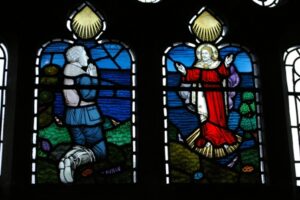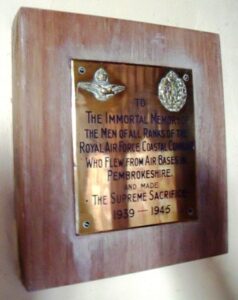The Village of Robeston Wathen sits just off the A40, mid way between Whitland and Haverfordwest. The village War Memorial sits to the front of St. Andrew’s Church, and is in the shape of a plain cross. Many thanks are due to Les Nixon for the photos detailing the names on the memorial, and for photos of the multitude of memorials inside the church.
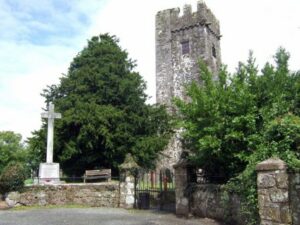
Great War, 1914-1918
Robert Adams, Private, 761, Welsh Regiment. Robert was the son of James and Mary Adams, of Lands End, Robeston Wathen. He served with the 4th Battalion, Welsh Regiment, a Territorial unit which was attached to 159 Brigade, 53rd (Welsh) Division. The Division fought at Gallipoli in 1915, and withdrew to Egypt in 1916 where they fought against the Senussi tribesmen. In March 1917 the Division marched into Palestine, and fought there for the remainder of the war, taking part in the capture of Jerusalem. Robert took ill towards the end of the war, as a result of his active service, and died of pneumonia on 27 April 1921 aged 26. He is buried at Robeston Wathen Churchyard.
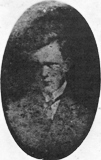
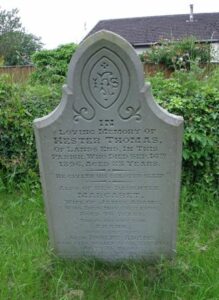
Ernest Bowen, Private, 200043, Welsh Regiment. Ernest was the son of John and Mary Bowen, of Church House, Robeston Wathen. He also enlisted into the 4th Battalion, Welsh Regiment, with the service number 346, and landed on Gallipoli with the Battalion on 7 August 1915, where they immediately became involved in desperate fighting which almost annihilated the Battalion. In the spring of 1917 the Territorial units were re-numbered, and Ernest number changed to 200043. He then returned to Britain, where he was posted as a reinforcement to the 15th Battalion, Welsh Regiment, part of 114 Brigade, 38th (Welsh) Division. The battalion was known as the Carmarthen Pals, and Ernest probably joined them on the Somme in spring 1918, where they were holding the line in the Aveluy sector. On the night of 21/22 August 1918 the Battalion began their part of the Advance to Victory, when they crossed the River Ancre under machine gun fire, and began their advance over the old Somme battlefield. During the coming weeks the Division swiftly forced their way towards the Hindenburg Line, and it was during this push, while on temporary detachment to the 114 Trench Mortar Battery, that Ernest was killed at action at the Battle of Epehy, on 18 September 1918. He was 23 years old, and is buried at Gouzeaucourt New British Cemetery, France. His brother Thomas also fell.
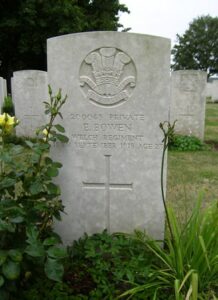
Thomas John Bowen, Private, 8830, South Wales Borderers. Thomas was the son of John and Mary Bowen, of Church House, Robeston Wathen. He was a pre-war regular, serving in the 1st Battalion, South Wales Borderers, which formed part of 3 Brigade, 1st Division. Thomas landed in France with the Battalion on 13 August 1914, and fought throughout the entire war on the Western Front, the 1st Division gaining a reputation as one of the finest Divisions in the war. Thomas though had obviously seen his health badly affected as a result of his service, as he died on 15 November 1920, aged 32. Thomas is buried at Robeston Wathen Churchyard. His brother Ernest also fell.
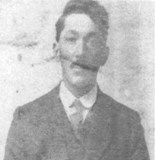
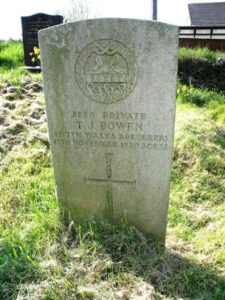
John James Brown, Private, 20552, Welsh Regiment. John was the son of William and Louisa Brown, of Green Plains, Minwere. He enlisted at Haverfordwest into the 15th Battalion, Welsh Regiment, the Carmarthen Pals. The Battalion formed at Rhyl at the end of 1914, and in the summer of 1915 moved to Morn Hill Camp, Winchester, as part of 114 Brigade, 38th (Welsh) Division. In December 1915 the Division moved to France, taking up positions in the ‘Nursery Sector’ near Fleurbaix. In June 1916 the Division marched south to the Somme, where they went into action on 7 July 1916, in an attempt to capture Mametz Wood. The first attack was beaten off with heavy casualties to the Welsh, and on 10 July they renewed their assault. The 15th Welsh moved in to the wood on 11 July, and were caught in a maelstrom of machine gun and sniper fire. John was killed in the wood that day, aged just 18. He has no known grave, and is commemorated on the Thiepval Memorial, France.
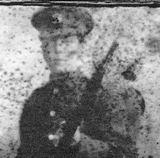
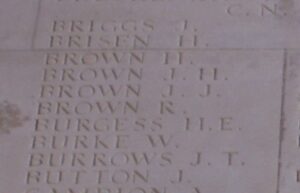
Llewellyn John, Lance Corporal, 5276, Royal Warwickshire Regiment. Llewellyn was the son of Isaac and Margaret John, of Little Whitehall, Robeston Wathen. He worked as a monumental mason at Llandovery prior to the war, and enlisted at Carmarthen into the 4th Reserve Battalion, Welsh Regiment. Llewellyn was then posted to the 2/7th Battalion, Royal Warwickshire Regiment, in 182 Brigade 61st Division. The Division arrived on the Western Front during May, 1916 and were moved to Fromelles where they took part in the abortive attack on the German positions there, as part of a diversionary attack for the Somme. Llewellyn was killed in Action at Fromelles on the 30 June 1916, aged 27, and is buried at Pont-Du-Hem Military Cemetery, La Gorgue.
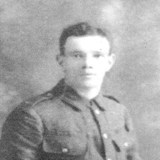
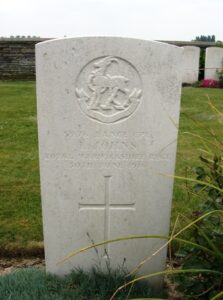
Thomas Jones, Private, 1756, Welsh Guards. Thomas was the son of Stephen and Sarah Jones, of Merlin’s Bridge, Haverfordwest. He married Ada Augustus Bennett at Narberth on 14 October 1913, and they lived at Lower House, South Dairy, Clarbeston Road. The couple had two young girls. Thomas enlisted at Haverfordwest on 30 June 1915 into the 1st Battalion, Welsh Guards. The Welsh Guards was raised on 26 February 1915 by order of King George V, in order to complete the national complement of regiments of Foot Guards, and became part of 3 Guards Brigade, Guards Division. On 17 August 1915 the 1st Battalion sailed for France, and took up position in the line at Loos. They fought with great distinction at Loos through the remainder of the year, and in summer of 1916 moved to the Somme, where they fought at the Battle of Flers-Courcelette, and then at the Battle of Morval, capturing Lesboeufs Village. Thomas joined the Welsh Guards on the Somme on 31 August 1916. Sadly he was killed here on 26 September 1916, aged 26. He had no known grave, and is commemorated on the Thiepval Memorial, France.
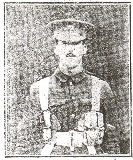
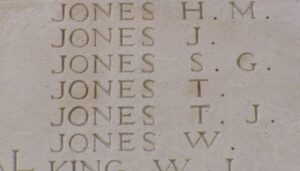
David Morgan, Private, 54295, Welsh Regiment. David was born at Robeston Wathen, the son of John and Ann Morgan. He married Rachel James on 1 June 1914, and lived with her at Robeston. David enlisted into the Welsh Regiment, and was posted to the 15th Battalion, Welsh Regiment (the Carmarthen Pals), which was attached to 114 Brigade, 38th (Welsh) Division. It is not known when he moved to France, but he was probably one of a batch of reinforcements sent to the Battalion after fighting at Mametz Wood, where they lost many men. David then saw service with the Battalion while they were at Ypres in 1917, and probably fought at the Pilckem Ridge and Langemarck, before taking ill and being sent back to Britain for treatment. He died of meningitis at York Place Military Hospital in Brighton on 17 March 1918, aged 34, and was brought home to be buried at Robeston Wathen Churchyard. His widow Rachel remarried, and became Rachel Williams, of the Police Station, Goodwick.
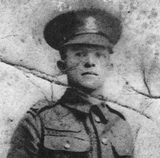
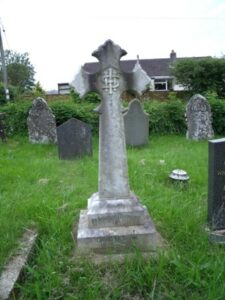
William Henry Morgan, Private, 2524, Australian Imperial Force. William was the son of Lewis and Mary Morgan, of Robeston Wathen. He had been a member of the 7th Welsh, a Territorial Cyclist Battalion prior to emigrating to Australia. He enlisted there at Bathurst, NSW on 6 August 1916, and was posted to the 5th reinforcements to the 54th Battalion, Australian Infantry. William embarked at Sydney on 30 September 1916 aboard HMAT Aeneas, and disembarked at Plymouth on 19 November 1916. William then sailed for France on 21 December 1916, and eventually joined his unit from Etaples in February 1917 on the Somme. William was admitted to hospital just weeks later, suffering from gunshot wounds to his face and hands, and rejoined his unit on 15 May, but was wounded again that same day, and was out of action for two more weeks. William then transferred to the 5th Division Headquarters, as Shoeing Smith in September, 1917, while the Australian Corps was at Ypres. He remained with the unit over the winter, but was court martialled in January 1918 for stealing a bag of oats, and sentenced to 70 days Field Punishment No. 2, before being posted back to his Battalion, and reverted to Private for misconduct. He then served with the 54th Battalion until being admitted to hospital in France 24 October 1918 suffering from pneumonia. William died of pneumonia in hospital on 4 November 1918, aged 36. He was buried at Abbeville Communal Cemetery Extension, France.
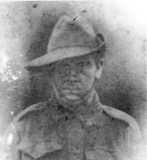
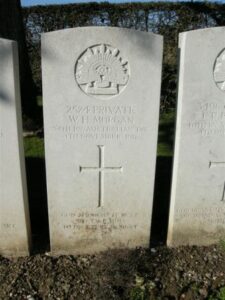
John Evan Phillips, Private, 337, Pembroke Yeomanry. John was the son of Alfred and Anne Phillips, of Back Farm, Robeston Wathen. He enlisted at Narberth into the Pembroke Yeomanry. The Pembroke Yeomanry were sent to Norfolk early in the war, as they had not originally signed up for overseas service. On 12 August 1915, John was swimming off the Norfolk coast, near the village of Mundesley, when he got into difficulties. One of his friends managed to get to him, and tried to support John in the water until they could be pulled out, but John sadly drowned. He was 21 years old, and his body was brought back home for burial at Robeston Wathen Churchyard.
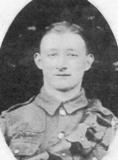

Hugh Williams, Second Lieutenant, Pembroke Yeomanry. Hugh was the son of John and Margaret Williams, of Landers Hook, Treffgarne, Pembrokeshire. He married prior to the war, and lived with his wife Anna Williams, at Old Gate House, Robeston Wathen. Hugh was commissioned into the Pembroke Yeomanry, but was then attached to the 7th Battalion, King’s Shropshire Light Infantry, attached to 8 Brigade, 3rd Division. In 1915 the Division saw action at Bellewaarde and Hooge, and took part in the Second attack on Bellewaarde, and in 1916 fought at the Actions of the Bluff, and at the St Eloi Craters. They were then moved south to the Somme, where they were to take part in the great Battle of the Somme, and fought there at the Battle of Albert, and at the Battle of Bazentin, where they captured Longueval. They then took part in the Battle of Delville Wood, and the Battle of the Ancre, before settling into another bleak winter in France. In May, 1917 the Division were at Arras, and fought at the First and Second Battles of the Scarpe, and at the Battle of Arleux and the Third Battle of the Scarpe, where they captured Roeux. Again they moved, this time back to Ypres, where they fought in the Third Battle of Ypres, at the Battle of the Menin Road and the Battle of Polygon Wood. In November the Division moved south again, where they fought at the Battle of Cambrai, and they were in the area during March, 1918 when the German Spring Offensive swept through the British lines, at the Battle of St Quentin and the First Battle of Bapaume. They then fought at the First Battle of Arras, 1918 before being moved to Flanders to rebuild. However the Germans switched the focus of their offensive to Flanders, and the Division were caught up in the worst of the fighting there, at the Battle of Estaires, and then at the Battles of Hazebrouck and Bethune. Hugh was killed near Bethune on 28 July 1918 aged 29, and is buried at Sandpits British Cemetery, Fouquereuil.
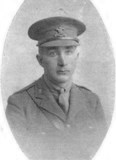
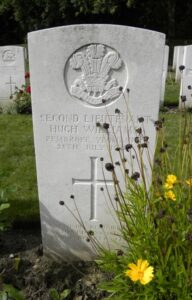
World War Two, 1939-1945
Vivian James Ackroyd, Sergeant, 415510, Royal New Zealand Air Force. Vivian was the son of Herbert Ackroyd and Edith Emily Ackroyd (Nee Thomas), of Temuka, Canterbury, New Zealand. He served as a Wireless Operator/ Air Gunner with 306 Ferry Training Unit, Royal New Zealand Air Force. Vivian was stationed at RAF Templeon during the war. He was killed when his Bristol Beaufort crashed near Sodston on 1 April 1943. He was 21 years old, and is buried at Robeston Wathen Churchyard.
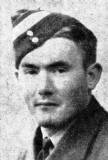
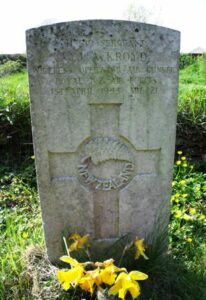
William Victor Bibby, Flight Sergeant, 1579109, Royal Air Force Volunteer Reserve. William was the son of William Victor And Catherine Jane Bibby, of Robeston Wathen. He served with 576 Squadron, Royal Air Force, which was a heavy bomber Squadron, equipped with the Avro Lancaster, and based at RAF Fiskerton, in Lincolnshire. William formed part of the experienced crew of Lancaster NF975, which took off from Fiskerton at 21.41 on 20 February 1945, bound for Dortmund. Sadly the Lancaster was lost after being hit by flak, which caused it to crash into the North Sea whilst returning from the raid, on the morning of 21 February 1945. William was 25 years old, and is commemorated alongside his fellow crewmen on the Runnymede Memorial, Surrey.
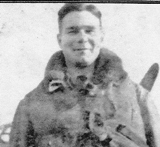
Philipp Harries Lewis, Junior Engineering Officer, Merchant Navy. Philipp was the son of John Harries Lewis, and of Letitia Ann Lewis, of Robeston Wathen. He served with the Merchant Navy aboard the SS Casanare (Liverpool). On 3 November 1940, Casanare was torpedoed by the German submarine U-99. The stricken ship triggered off a chain of events which led to the U99 torpedoing two other ships which came to her rescue, HMS Laurentic, and HMS Patroclus. Laurentic was the next ship to be torpedoed, and while attempting to rescue the survivors of the Casanare, Patroclus was torpedoed and sank. Philipp was among the many men killed that day. He was 22 years old, and is commemorated on the Tower Hill Memorial, London.
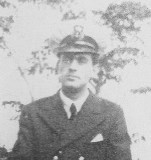
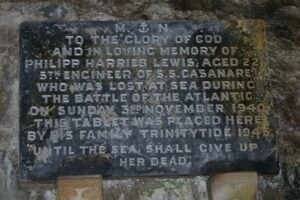
Richard Joseph Napierala, Aircraftman 2nd Class, 1433838, Royal Air Force Volunteer Reserve. Richard was the son of Joseph and Helen Napierala, of Beare Green. The family were Polish refugees, who had fled to Britain after the Nazi invasion of their country. Richard was serving with a Polish Training Squadron at RAF Templeton, and was an active member of Roberston Wathen Church. He died whilst parachute training at Winchester on 13 January 1944. Richard was 22 years old, and is buried at Dorking Cemetery, Surrey.
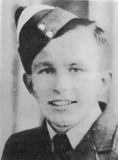
Richard Benjamin Thomas, Marine, PO/X 108788, Royal Marines. Richard served with the Royal Marines, and after the Normandy Landings of 6 June 1944, was serving with 27th Battalion, RM. The battalion took part in the drive through Holland in 1944, and then into Germany, where Richard was killed, just six days before the surrender of Germany, on 29 April 1945. He is buried at Becklingen War Cemetery, Germany, in Grave Ref. 7. G. 11. There is a memorial chair to him inside Robeston Wathen Church.
Memorial Window to RAF Coastal Command in Robeston Wathen Church
